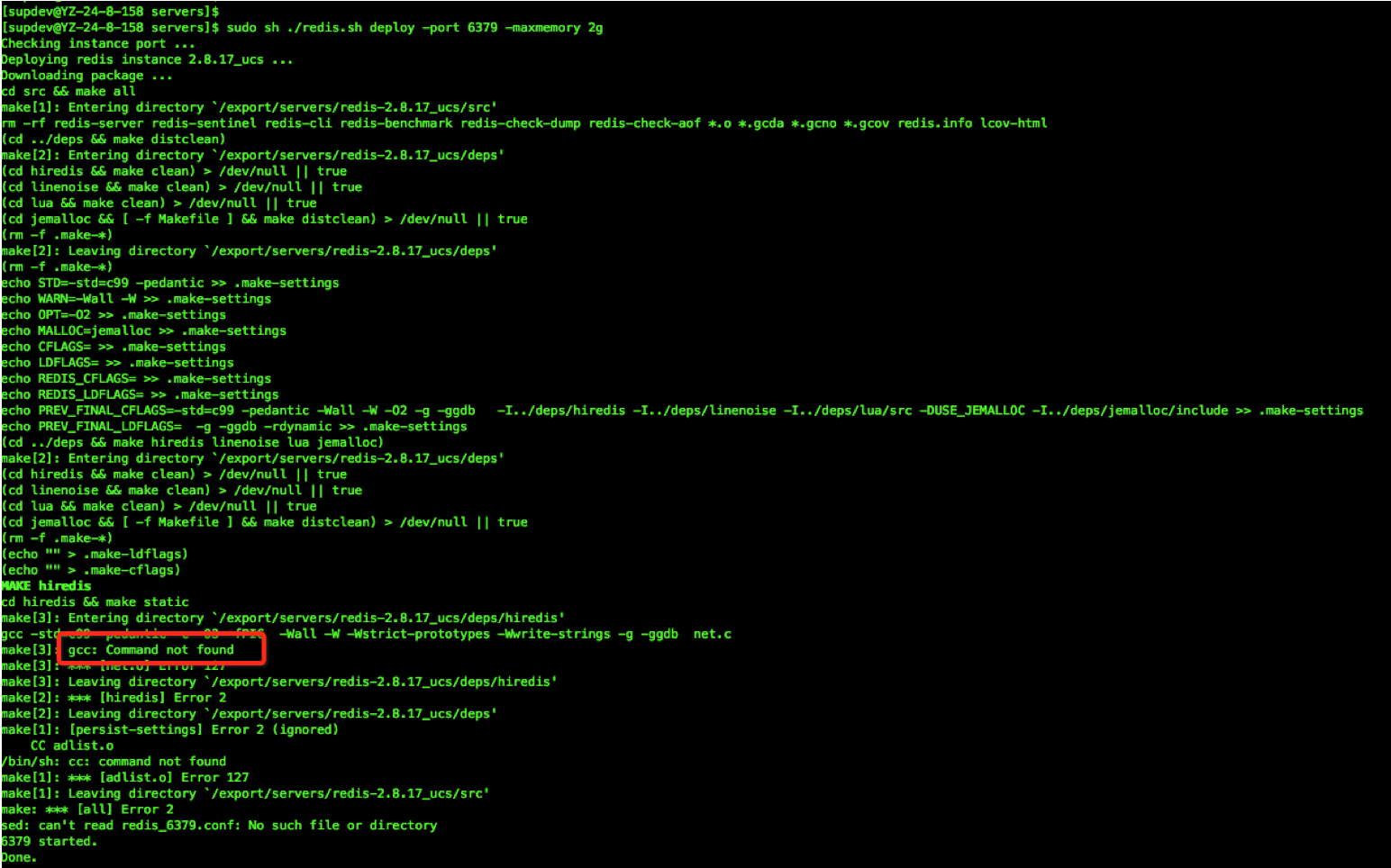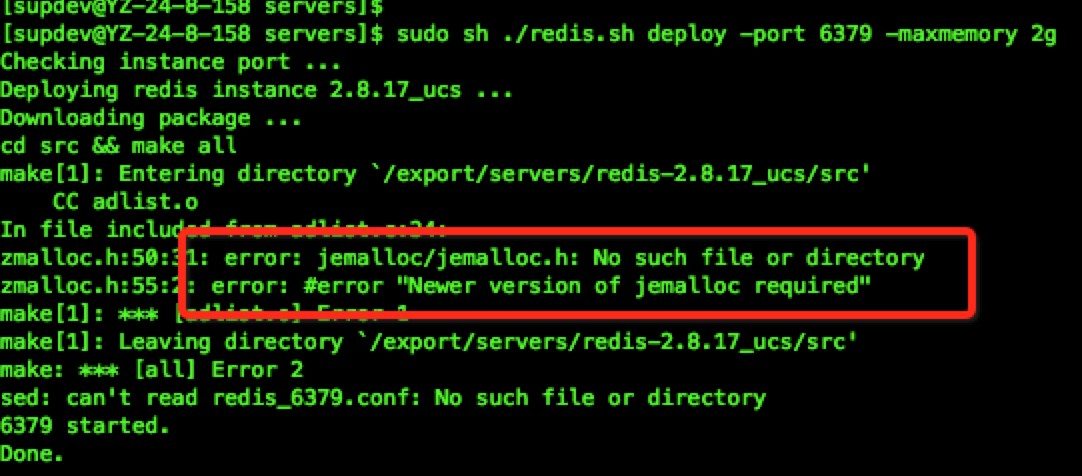搭建redis的步骤:
第一步:
在本机部署了redis实例,就需要在客户端所在主机的hosts里添加
127.0.0.1 redis.local
192.168.150.61 cfs.cache.jd.local cfs.jim.jd.local adm.cache.360buy.com
192.168.150.151 erp1.360buy.com
如果在测试环境192.168.100.100上部署了redis实例,就需要在客户端所在主机的hosts里添加
192.168.100.100 redis.local
192.168.150.61 cfs.cache.jd.local cfs.jim.jd.local adm.cache.360buy.com
192.168.150.151 erp1.360buy.com
第二步:
下载redis.sh放到任意目录如/tmp下,下载redis-2.8.17_ucs.tar.gz,并将该包放到/export/servers下并进行tar xzvf ./redis-2.8.17_ucs.tar.gz解压。
第三步:
行"./redis.sh deploy -port 6379 -maxmemory 2g"即可部署(redis.sh是个脚本,必要时chmod +x redis.sh或者sh ./redis.sh deploy -port 6379 -maxmemory 2g)
中间如果出现下图中gcc:command not found

执行sudo yum -y install gcc 命令
之后再次执行sh ./redis.sh deploy -port 6379 -maxmemory 2g(要在redis.sh同级目录下)
如果又出现下图中报错:

zmalloc.h:50:31: error: jemalloc/jemalloc.h: No such file or directory
zmalloc.h:55:2: error: #error "Newer version of jemalloc required"
make[1]: *** [adlist.o] Error 1
make[1]: Leaving directory `/data0/src/redis-2.6.2/src'
make: *** [all] Error 2
原因分析:
在README 有这个一段话。
Allocator
---------
Selecting a non-default memory allocator when building Redis is done by setting
the `MALLOC` environment variable. Redis is compiled and linked against libc
malloc by default, with the exception of jemalloc being the default on Linux
systems. This default was picked because jemalloc has proven to have fewer
fragmentation problems than libc malloc.
To force compiling against libc malloc, use:
% make MALLOC=libc
To compile against jemalloc on Mac OS X systems, use:
% make MALLOC=jemalloc
说关于分配器allocator, 如果有MALLOC 这个 环境变量, 会有用这个环境变量的 去建立Redis。
而且libc 并不是默认的 分配器, 默认的是 jemalloc, 因为 jemalloc 被证明 有更少的 fragmentation problems 比libc。
但是如果你又没有jemalloc 而只有 libc 当然 make 出错。 所以加这么一个参数。
解决方法:在Redis目录下面执行make MALLOC=libc
之后再执行sh ./redis.sh deploy -port 6379 -maxmemory 2g
此时执行ps -ef|grep redis显示成功了